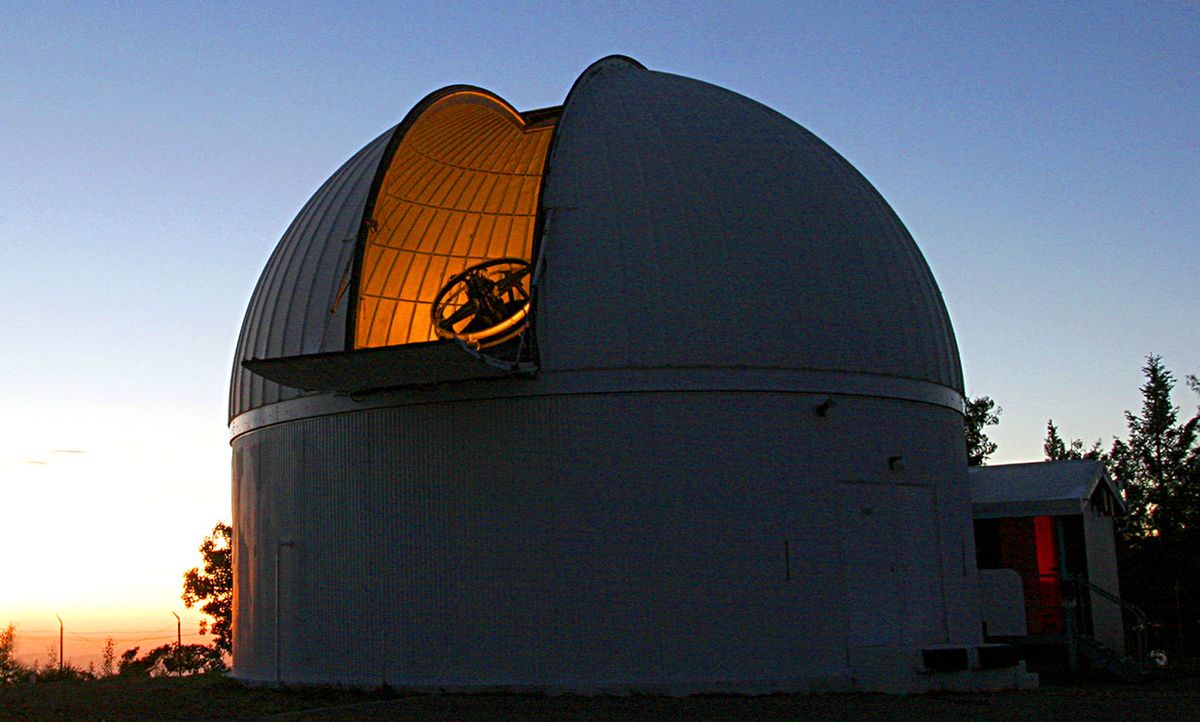One night last week around 7 p.m., Michael Lundquist was at his home in Tucson, Arizona when his cellphone rang. He knew from the ringtone that it was a robocall. So he took it immediately. He lives for moments like this.
“A LIGO/VIRGO alert has been received,” the automated voice told him (generated by a Python script that he’d written). The LIGO gravitational wave detector in Louisiana and Washington state had just seconds earlier picked up a ripple in spacetime. Lundquist opened his email app to see the details of LIGO’s gravitational wave alert.
The gravitational wavefront from a collision of two neutron stars some 115 million light years away had, LIGO reported, just passed through the earth. And it looked like this potential “kilonova” event could be visible in Tucson that night. (The alert arrived, as it happened, perfectly timed to kick off the evening’s telescope observations, under partly cloudy but clearing skies.)
Lundquist is one of a handful of pioneers of what’s called “multi-messenger” astronomy, using in this case gravitational wave detections to trigger astronomical observations via an optical telescope. His group’s SAGUARO system (standing for Searches After Gravitational-waves Using ARizona Observatories) has automated access to a 1.5-meter survey telescope in the Catalina mountains outside Tucson.
Within an hour of receiving notification of the gravitational wave candidate event “S190822c,” Lundquist and others in the SAGUARO loop began plotting their night’s observing run of the region of the sky where this gravitational wave source might be found. In this case, the LIGO data analysis programs had concluded from the shape of the gravitational wave front that two in-spiraling and ultimately colliding neutron stars had produced the spacetime blip. LIGO is also well tuned to detect neutron star-black hole collisions and—the predominant, vanilla flavor in LIGO-land—black hole-black hole collisions.
The fact that LIGO is able to point in any direction to the potential source of the gravitational waves is remarkable in itself. A single gravitational wave interferometer provides precious little information about where the candidate wave originated. However, with two LIGO interferometers in different regions of the United States and one European gravitational wave interferometer (VIRGO) outside Pisa, Italy, careful timing of the wavefront’s arrival at multiple detectors allows astronomers to triangulate the direction of the signal.
As it turns out, S190822c was ultimately retracted. Detecting changes in laser beam path length down to fractions of the width of a proton—which is how much spacetime wobbles and warps when a gravitational wave passes through—is often a game of false positives. S190822c was one such false positive.
Yet, as Lundquist and co-authors describe in their recent paper on SAGUARO, published in Astrophysical Journal Letters, they have had three candidate gravitational wave events on which to test their increasingly automated system.
The closest they’ve yet come to discovering the optical counterpart to a gravitational wave source came on 25 April of this year. In that case, the source was in a galaxy some 500 million light years distant.
Lundquist says that, knowing the region of the sky where the gravitational wave had just been found, SAGUARO’s algorithms get telescope time as soon as possible to take pictures of between 12 and 24 tiled segments of the sky.
The team already has on file previous images from that same telescope of 5,069 patches of sky, covering most of the sky that’s visible from Tucson, Arizona’s latitude. So the algorithm automatically aligns and then subtracts that archived image from the new image. Which creates a negative picture that only registers any changes in stars or galaxies (or asteroids or comets or planets) in the frame.
Through this process, the 25 April event, Lundquist says, generated 2,711 candidate sources. Which would be impossible to sort out by hand in any reasonable timeframe, when the optical flare-up in the distant galaxy might only be visible for a day or two after the gravitational wave signal arrives.
So Lundquist has also set up a machine learning pipeline that automatically considers each potential candidate source for more trivial explanations—a known variable star, for instance, or an over-saturated image that caused noisy pixel data.
This way, the team can whittle the list of possible gravitational wave sources down to one or two dozen objects that could then be reasonably followed up on by astronomers.
The thing they’re ultimately looking for looks like a supernova in a far away galaxy, only brighter. Called a kilonova, this recently discovered astronomical event (thanks in large part to the observations of another multi-messenger gravitational wave detection from 2017) is now believed to be the source of most of the universe’s heavy elements. That gold in your watch or ring or necklace is in fact very likely the byproduct of two colliding neutron stars somewhere nearby, sometime around or before 4.6 billion years ago, when our solar system formed.
“We have it in a nice spot where we’re waiting for a really good event,” Lundquist says. “But in the meantime we’re just trying to improve the machine learning as much as possible—to make it just that much easier to find the kilonova.”
An version of this post appears in the October 2019 print issue as “Algorithms Search for Space-time Rumbles.”
Margo Anderson is senior associate editor and telecommunications editor at IEEE Spectrum. She has a bachelor’s degree in physics and a master’s degree in astrophysics.



